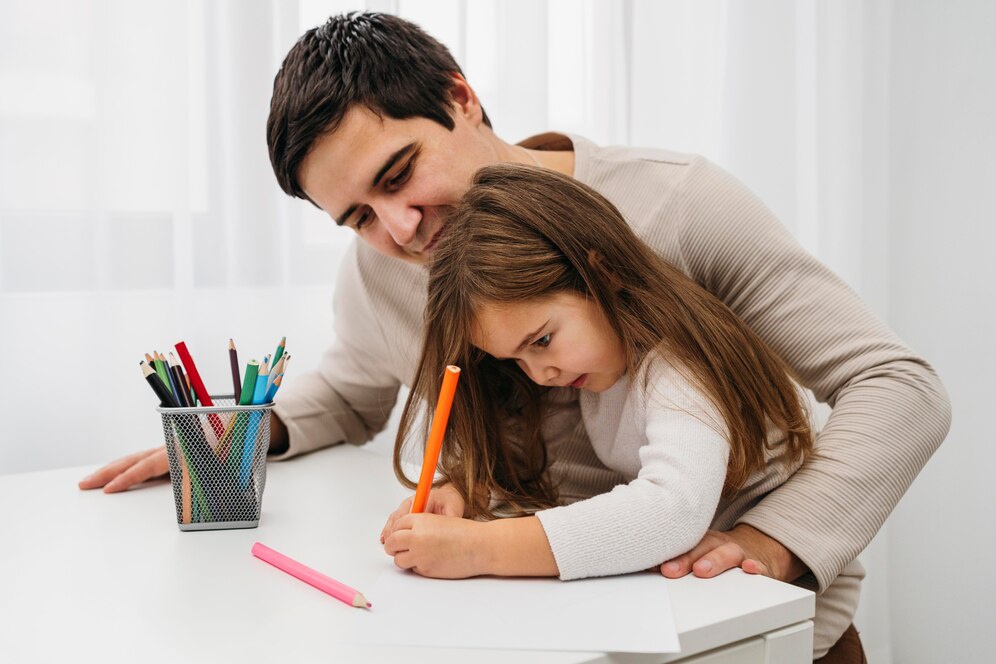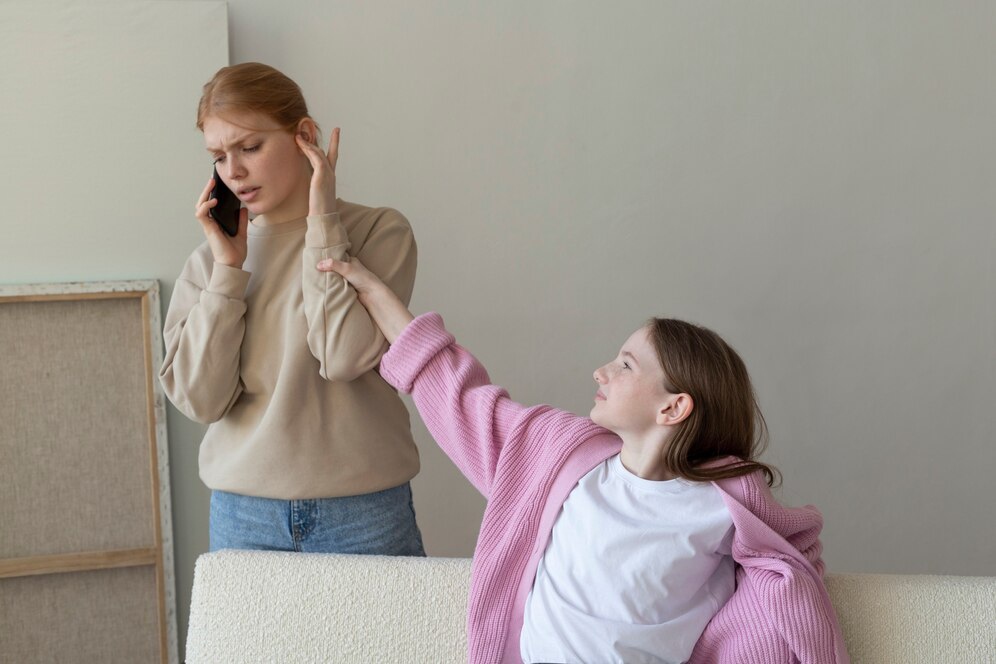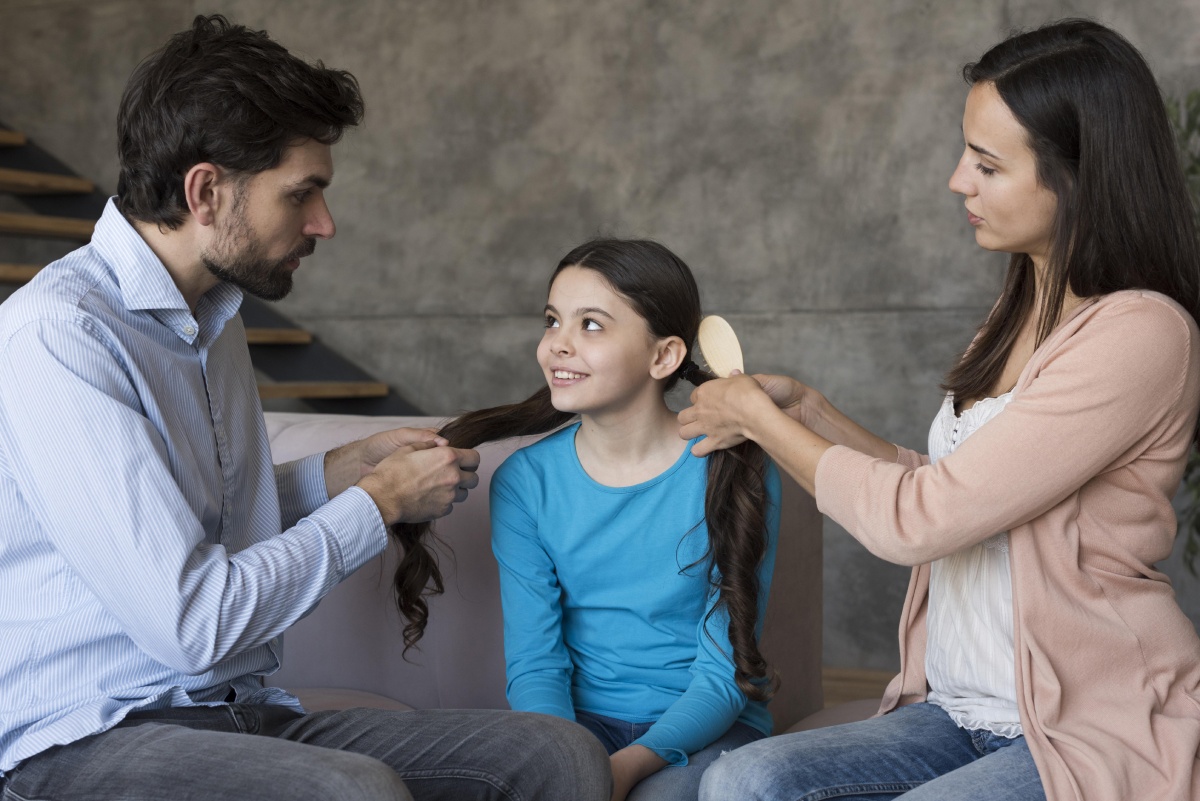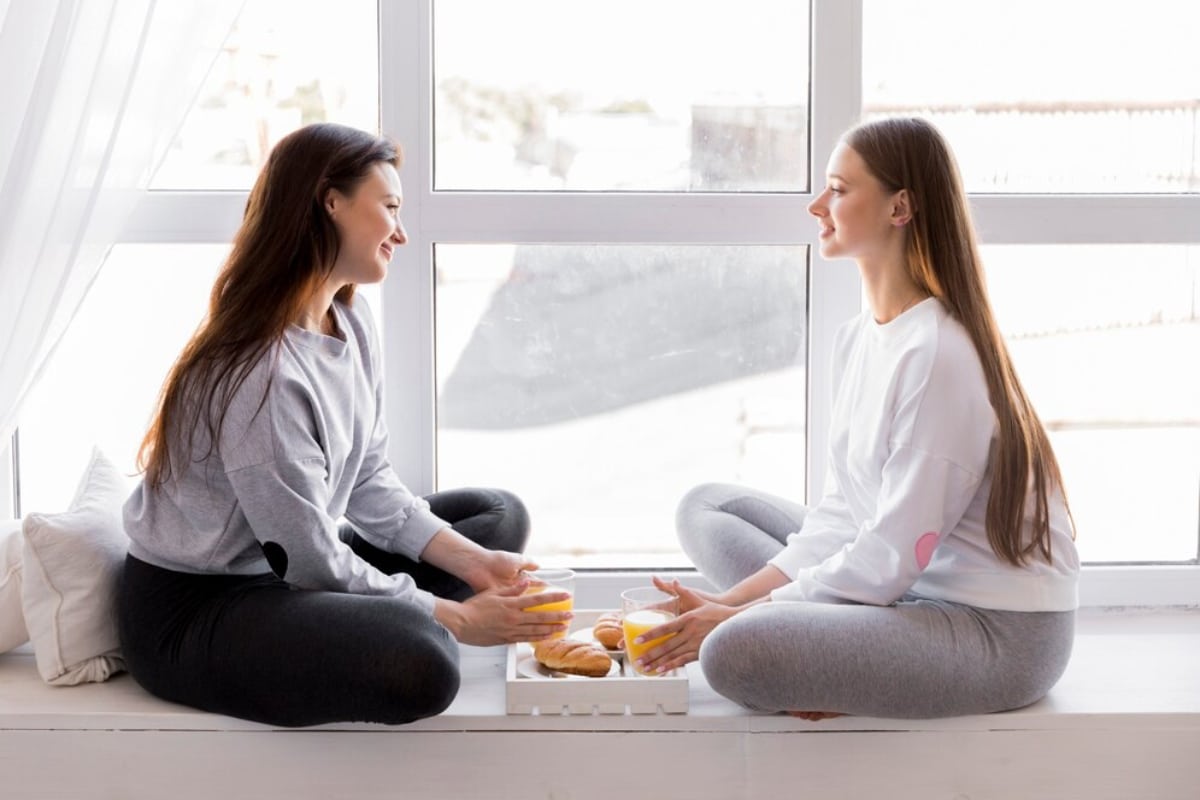
Promoting Positive Body Talk at Home
What Our Words Teach Our Children
Have you ever caught yourself saying something like, “I feel fat today,” or “I need to burn off that dessert,” in front of your child? You’re not alone. These comments may seem harmless, but they affect a child’s view of the world and themselves. They matter more than we think.
Body confidence doesn’t begin in the classroom or on social media. It starts at home — in the bathroom mirror, at the dinner table, and in casual remarks about ourselves and others. As children approach puberty, their bodies change fast, and their self-image often struggles to keep up. That’s why fostering a positive body image through the language we use at home is so vital.
In this post, we’ll explore how to promote positive body talk in your everyday parenting. You’ll learn to help your child with body changes in a kind way. You’ll also show self-respect and build a family culture that celebrates all bodies, including theirs.
Why Body Talk at Home Shapes Self-Esteem
Home Is the First Mirror
Long before children hear feedback from classmates or the internet, they absorb your words, habits, and reactions. How you talk about your body and respond to others shapes their body image. Your words about others’ appearances also play a part.
A study by the Mental Health Foundation (UK) found that nearly one in three kids aged 11–16 worry about their body image due to social media images. But even more impactful than media is what children witness daily, especially from parents and caregivers.
Recognising the Hidden Language of Body Talk
It’s not just about outright insults or criticisms. Body talk can be subtle and still leave a lasting impression.
Examples of negative body talk:
- “I shouldn’t be eating this; it’s bad for me.”
- “You’ve grown so fast, you’re huge!”
- “You need to slim down for summer.”
- “Are you really going to wear that?”
Kids often hear these comments as judgment. This happens because of worry or habit, and they may internalise them.
Examples of positive body talk:
- “Our bodies are all different, and that’s what makes us interesting.”
- “You’re strong, fast, and full of energy — that’s brilliant.”
- “It’s amazing what your body can do — it grew taller this year!”
- “You seem comfortable in your skin today — how does that feel?”
This language boosts body confidence in tweens. They often face peer pressure, insecurity, and rapid physical changes.
Encouraging Body Confidence in Tweens: What to Say and Do
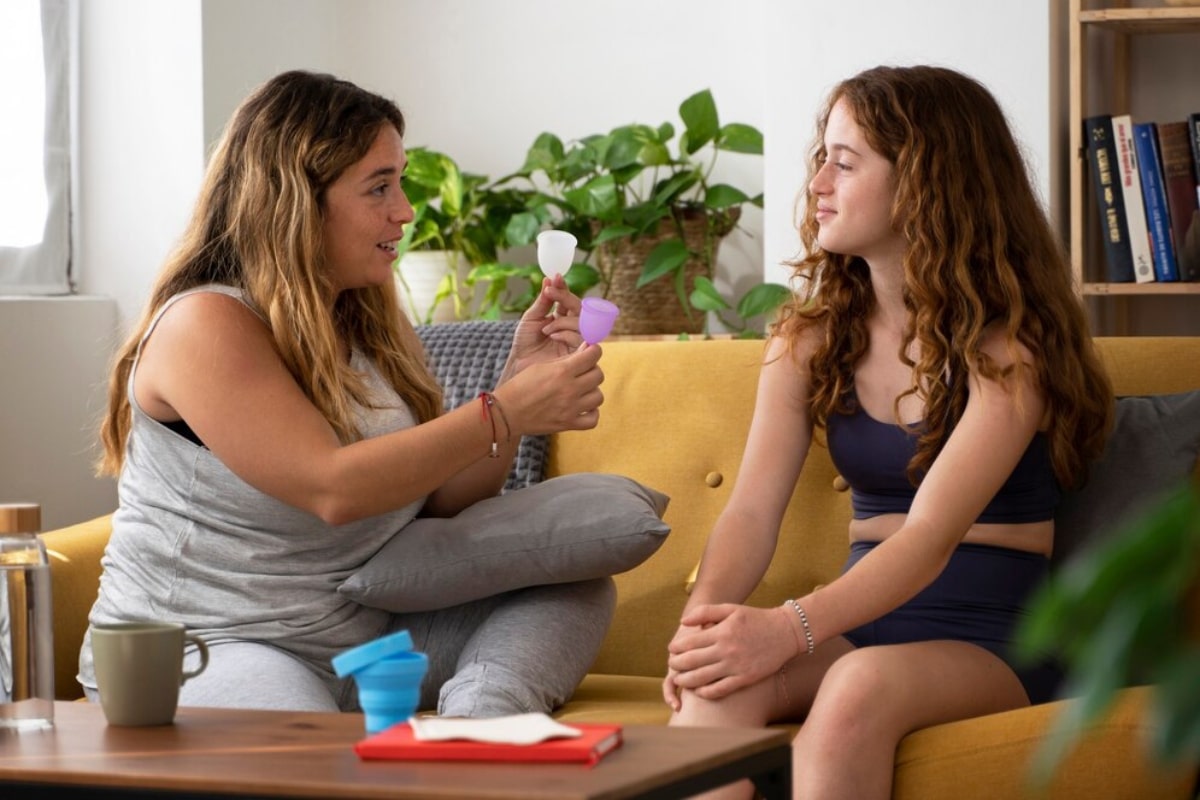
1. Celebrate Function Over Appearance
Instead of focusing on how bodies look, highlight what they do. Getting taller, healing scrapes, running quickly, dancing, and digesting food are all incredible skills.
Say things like:
- “Your legs are strong — they carried you through that long walk.”
- “I’m so impressed by how your arms helped you climb that wall.”
- “Isn’t it cool that your stomach digests food and gives you energy?”
This helps your child shift their focus from comparison to appreciation.
2. Praise Qualities Beyond Looks
Tweens are often complimented (especially girls) on appearance — “You look so pretty,” “What a handsome boy.” While compliments are lovely, balance them with praise for character, effort and skills.
Try:
- “You were really kind to your friend today.”
- “You kept trying even when it got tough — that’s resilience.”
- “I love how curious you are about the world.”
By recognising traits beyond looks, you convey that their worth is deeper than their appearance.
3. Model Body Respect and Self-Acceptance
Your child is watching — even when you think they’re not. When you criticise your body, talk about diets, or feel ashamed of your looks, your child picks up on that.
Instead:
- Speak kindly about your body, especially when it’s imperfect.
- Say, “I’m tired today, but I’m grateful my body keeps going.”
- Avoid labelling foods as “bad” or “naughty.”
When they see you treating your body with respect, they’re more likely to do the same for themselves.
4. Teach Critical Thinking Around Media
Kids see many filtered and edited images. These images can distort how they view reality. Help them understand what they see.
Ask:
- “Do you think that picture was edited?”
- “How does this advert make you feel about yourself?”
- “Why do you think people use filters?”
These talks help kids question unrealistic beauty standards. They also teach the importance of being true to oneself.
5. Avoid Food and Weight Shaming
Comments about food—even if well-meaning—can contribute to shame or fear about eating. During puberty, kids naturally gain weight to support their growth.
Instead of saying:
- “Do you really need another helping?”
- “You’ll get chubby if you eat all that.”
Try:
- “Is your body telling you it’s still hungry?”
- “Let’s focus on how this food makes us feel energised.”
Encourage intuitive eating and food freedom, rather than rules or guilt.
Handling Insecurities With Care

Puberty can be an uncomfortable time. Your child might come to you in tears about acne, body hair, or weight gain. Here’s how to handle it with compassion:
- Listen without dismissing. Even if their concern seems small to you, it’s big to them.
- Validate their feelings. “I can see that’s upsetting you. Want to talk more about it?”
- Offer context. “This is a normal part of puberty — everyone goes through it at a different pace.”
- Share your experience. A relatable story can help them feel less alone.
The goal isn’t to fix or change their body. It’s to help them feel safe, understood, and accepted.
Rising Confident Kids in a Comparison Culture
Comparison starts young. At school, at the pool, or online, children notice who has longer legs, smoother skin, or a smaller waist.
What you can do:
- Normalise diversity. Show them bodies of all shapes, sizes, abilities, and ethnicities.
- Use inclusive language. Talk about people as “strong,” “capable,” or “kind,” not “thin” or “perfect.”
- Encourage role models who reflect values, not vanity. Honour artists, scientists, athletes, and activists. These are the people changing the world, not just chasing a look.
Building a Body-Positive Home Environment
Make space for feelings
Sometimes, children need to vent. “I hate my nose.” “Why do I have spots?” Don’t rush in to solve — sit with them in it.
Say:
- “That sounds hard. I’ve had days like that, too.”
- “Your body is still growing — it might feel strange right now, but it’s doing exactly what it should.”
Empathy opens the door to growth.
Use Books and Stories as Teaching Tools
Reading stories that reflect body diversity can help reinforce your messages. Some excellent choices for tweens include.
- Her Body Can by Katie Crenshaw and Ady Meschke
- The Body Image Book for Girls by Charlotte Markey
- Be You by Peter H. Reynolds
Stories make abstract ideas relatable and easier to discuss.
Encourage Activities That Promote Confidence
Let your child explore activities that connect them to their body in positive ways:
- Dance, martial arts, or yoga for body awareness
- Art or writing to express feelings
- Volunteering or team sports to build purpose and connection
Confidence grows when children feel in control, not just over how they look, but how they show up in the world.
Conclusion: It Starts With Your Voice

Raising confident kids doesn’t need a perfect plan. It takes presence, patience, and a readiness to keep talking. Your words, even the offhand ones, are shaping how your child sees themselves. Choose ones that build, not bruise.
By promoting positive body talk at home, you’re not just helping your child feel good about their body. You’re giving them tools to explore a world that often says otherwise. These tools help them question, reflect, and celebrate who they are beyond their appearance.
Ready to shift the conversation at home? Make one small change today. Give a compliment that praises effort. Enjoy a guilt-free dinner. Or take a moment to appreciate your own reflection in silence. Your child is watching — and learning.
What body-positive habits have worked in your home? Share your thoughts, stories, or questions in the comments — let’s learn from each other.
